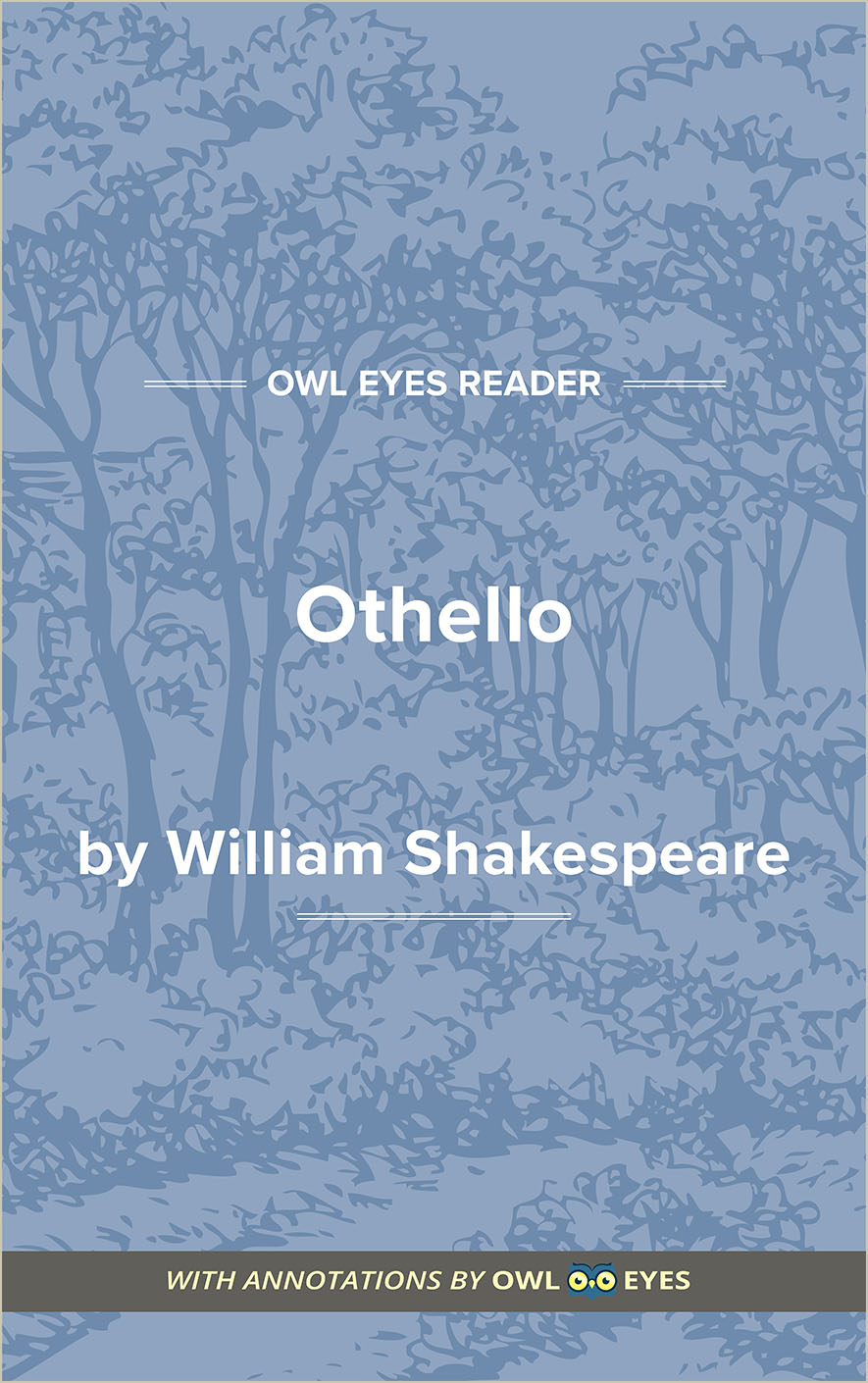Analysis Pages
Rhyme in Othello
Most of the language in Othello is unrhymed, either in the form of prose or blank verse. In certain passages, however, Shakespeare uses end rhyme to heighten the rhetorical pitch of the scene. The first four acts end on a rhymed couplet from Iago, who uses the lines to divulge the next stage of his unfolding plan. Other uses of rhyme include a satirical, blazon-style poem by Iago and several intense declarations from Othello.
Rhyme Examples in Othello:
Act I - Scene II
🔒"For if such actions may have passage free, Bond-slaves and pagans shall our statesmen be...." See in text (Act I - Scene II)
Act I - Scene III
🔒"I have't. It is engender'd. Hell and night Must bring this monstrous birth to the world's light...." See in text (Act I - Scene III)
"If virtue no delighted beauty lack,(310) Your son-in-law is far more fair than black...." See in text (Act I - Scene III)
"To mourn a mischief that is past and gone Is the next way to draw new mischief on...." See in text (Act I - Scene III)
"the bloody book of law You shall yourself read in the bitter letter After your own sense...." See in text (Act I - Scene III)
Act II - Scene I
🔒"If she be fair and wise, fairness and wit, The one's for use, the other useth it...." See in text (Act II - Scene I)
Act II - Scene III
🔒"Why, how now, ho! from whence ariseth this?..." See in text (Act II - Scene III)
"If drink rock not his cradle...." See in text (Act II - Scene III)
"“And let me the canakin clink, clink; And let me the canakin clink:..." See in text (Act II - Scene III)
Act IV - Scene I
🔒"Think every bearded fellow that's but yoked May draw with you. There's millions now alive That nightly lie in those unproper beds Which they dare swear peculiar...." See in text (Act IV - Scene I)
Act V - Scene I
🔒"Strumpet, I come! Forth of my heart those charms, thine eyes, are blotted; Thy bed, lust-stain'd shall with lust's blood be spotted...." See in text (Act V - Scene I)

